Calcium signals and calpain-dependent necrosis are essential for release of coxsackievirus B from polarized intestinal epithelial cells
- PMID: 21737691
- PMCID: PMC3164450
- DOI: 10.1091/mbc.E11-02-0094
Calcium signals and calpain-dependent necrosis are essential for release of coxsackievirus B from polarized intestinal epithelial cells
Abstract
Coxsackievirus B (CVB), a member of the enterovirus family, targets the polarized epithelial cells lining the intestinal tract early in infection. Although the polarized epithelium functions as a protective barrier, this barrier is likely exploited by CVB to promote viral entry and subsequent egress. Here we show that, in contrast to nonpolarized cells, CVB-infected polarized intestinal Caco-2 cells undergo nonapoptotic necrotic cell death triggered by inositol 1,4,5-trisphosphate receptor-dependent calcium release. We further show that CVB-induced cellular necrosis depends on the Ca(2+)-activated protease calpain-2 and that this protease is involved in CVB-induced disruption of the junctional complex and rearrangements of the actin cytoskeleton. Our study illustrates the cell signaling pathways hijacked by CVB, and perhaps other viral pathogens, to promote their replication and spread in polarized cell types.
Figures
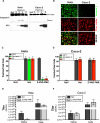
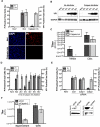


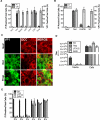
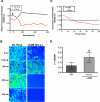
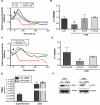
Similar articles
-
Release of intracellular calcium stores facilitates coxsackievirus entry into polarized endothelial cells.PLoS Pathog. 2010 Oct 7;6(10):e1001135. doi: 10.1371/journal.ppat.1001135. PLoS Pathog. 2010. PMID: 20949071 Free PMC article.
-
A Three-Dimensional Cell Culture Model To Study Enterovirus Infection of Polarized Intestinal Epithelial Cells.mSphere. 2015 Nov 18;1(1):e00030-15. doi: 10.1128/mSphere.00030-15. eCollection 2016 Jan-Feb. mSphere. 2015. PMID: 27303677 Free PMC article.
-
The type 3 inositol 1,4,5-trisphosphate receptor is concentrated at the tight junction level in polarized MDCK cells.J Cell Sci. 2003 Jul 1;116(Pt 13):2791-803. doi: 10.1242/jcs.00482. Epub 2003 May 20. J Cell Sci. 2003. PMID: 12759372
-
The actin cytoskeleton as a barrier to virus infection of polarized epithelial cells.Viruses. 2011 Dec;3(12):2462-77. doi: 10.3390/v3122462. Epub 2011 Dec 21. Viruses. 2011. PMID: 22355449 Free PMC article. Review.
-
A Kidnapping Story: How Coxsackievirus B3 and Its Host Cell Interact.Cell Physiol Biochem. 2019;53(1):121-140. doi: 10.33594/000000125. Cell Physiol Biochem. 2019. PMID: 31230428 Review.
Cited by
-
Opposite Effects of Apoptotic and Necroptotic Cellular Pathways on Rotavirus Replication.J Virol. 2022 Jan 12;96(1):e0122221. doi: 10.1128/JVI.01222-21. Epub 2021 Oct 20. J Virol. 2022. PMID: 34668777 Free PMC article.
-
Egress of non-enveloped enteric RNA viruses.J Gen Virol. 2021 Mar;102(3):001557. doi: 10.1099/jgv.0.001557. Epub 2021 Feb 9. J Gen Virol. 2021. PMID: 33560198 Free PMC article. Review.
-
Concepts and mechanisms: crossing host barriers.Cold Spring Harb Perspect Med. 2013 Jul 1;3(7):a010090. doi: 10.1101/cshperspect.a010090. Cold Spring Harb Perspect Med. 2013. PMID: 23818514 Free PMC article. Review.
-
Enteroviruses infect human enteroids and induce antiviral signaling in a cell lineage-specific manner.Proc Natl Acad Sci U S A. 2017 Feb 14;114(7):1672-1677. doi: 10.1073/pnas.1617363114. Epub 2017 Jan 30. Proc Natl Acad Sci U S A. 2017. PMID: 28137842 Free PMC article.
-
The Role of β Cell Stress and Neo-Epitopes in the Immunopathology of Type 1 Diabetes.Front Endocrinol (Lausanne). 2021 Feb 18;11:624590. doi: 10.3389/fendo.2020.624590. eCollection 2020. Front Endocrinol (Lausanne). 2021. PMID: 33679609 Free PMC article. Review.
References
-
- Agol VI, Belov GA, Bienz K, Egger D, Kolesnikova MS, Raikhlin NT, Romanova LI, Smirnova EA, Tolskaya EA. Two types of death of poliovirus-infected cells: caspase involvement in the apoptosis but not cytopathic effect. Virology. 1998;252:343–353. - PubMed
-
- Barco A, Feduchi E, Carrasco L. Poliovirus protease 3C(pro) kills cells by apoptosis. Virology. 2000;266:352–360. - PubMed
-
- Benetti R, Copetti T, Dell'Orso S, Melloni E, Brancolini C, Monte M, Schneider C. The calpain system is involved in the constitutive regulation of beta-catenin signaling functions. J Biol Chem. 2005;280:22070–22080. - PubMed
Publication types
MeSH terms
Substances
Grants and funding
LinkOut - more resources
Full Text Sources
Research Materials
Miscellaneous

